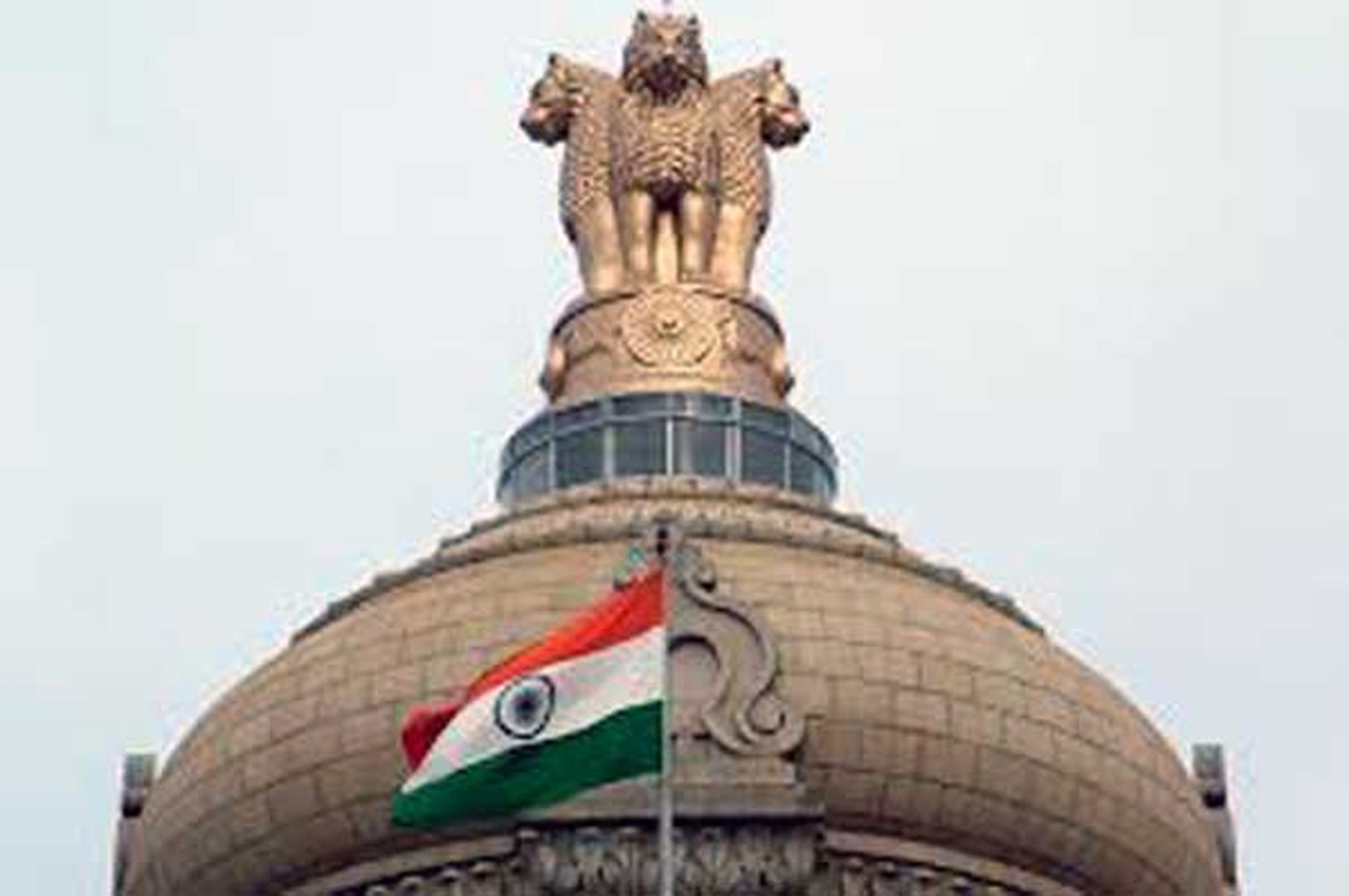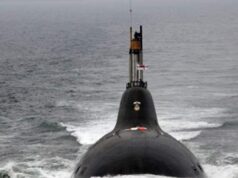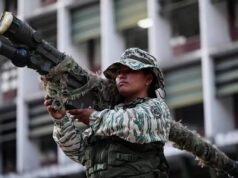Projecting Comprehensive National Power: India’s Achilles heel?

By Colonel Satish Singh Lalotra
Seldom in a nation’s history do defining moments come which call for pulling off its ‘Comprehensive National Power’ (CNP) in more ways than one , as has been found in the aftermath of ‘OP Sindoor”. Has the country been successful in acquitting itself well in all the parameters so defined by this world wide ‘Putative measure’ by combining various quantitative indices to create a single number held to measure the power of a nation state? Though as per GOI, the operation so launched against the perpetrators of carnage at Pahalgam on the night of 07 May have given a breather, (to watch out for a ‘chastened Pakistan’); it still carries within its realm a fair degree of data both tangible and intangible to draw out lessons for strategists sitting in the Raisina hills. Since the time Modi dispensation took over from the previous government in 2014, there has been a quantum jump in many of the CNP parameters, providing a total makeover to India’s image as seen from the eyes of not only the tiniest to mightiest of the countries , but even the citizenry of this country. Comprehensive national power (CNP) simply put is– Country’s overall strength, encompassing various aspects like economic, military, technological prowess and social capabilities in all their entirety. It’s a concept particularly prominent in Chinese political thought, where it is seen as a measure of a nation’s ability to pursue its strategic interests both domestically and internationally. Certain world renowned institutions like the ‘Lowy institute’ use CNP as a basis for ranking country’s power and influence, that is closely followed by the world bodies having a predominant overhang of world powers.
Having stated the above, many of the parameters of this ‘CNP’ were put in a cold storage either by design or by default preceding the years of 2014 by successive governments providing a ‘Lilliputian view’ of an otherwise ‘Goliathan India’. Though this write up of mine will not be able to encapsulate all the overriding factors that go into making a nation comprehensively strong, nevertheless an effort has been made to elucidate the same in as many ways as possible keeping the still ongoing sentiment of ‘Op Sindoor’ strong as its central theme. Since when in the last few decades, the national resolve rose in a crescendo against the ongoing tyranny inflicted by a weaker nation (Pakistan) blurring all regional diversities that defines this sub-continent of ours? Not in my recent memory till as late as the ill-fated afternoon of 22 April 2025. ‘Michel Porter’ the famous American businessman cum professor at the ‘Harvard business school’ and founder of the consulting firm ‘The Monitor group’ now part of ‘Deloitte’ lists five (5) major resources i.e Physical, human, infrastructure, knowledge, and capital resources that goes into making a CNP for a nation state. Out of these five attributes of the CNP thus stated, the four namely physical, infrastructure, knowledge and capital resources India is second to none. The physicality of India stretching into 3.287 million square kilometers extending from the snow -covered Himalayan heights to the tropical rain forests of the south stands it apart as the 7 th largest country in the world. With the largest population of the world within the confines of the above physicality topped up by an equal measure of knowledge share and capital resources, why is it that this country is not able to get its due despite such defining parameters of its CNP?
Is it any brainer that of the above 5 (five) attributes that goes into defining a CNP, it is the ‘Human’ attribute that counts the most and also overrides all other 4( four) attributes. Hence the centrality of the human capital that abounds within a country that goes to provide traction to all other attributes in making the CNP a powerful tool to judge a country’s worth in the comity of nations. Strategic resources, capabilities, outcomes etc that go beyond traditional power are often shaped up by the quality of the human resource nurtured through centuries of careful upkeep bespeaking the nation’s soft power. With the ongoing sentiment of ‘Op Sindoor’ still ruling the roost for most Indians, was the brief but intense military skirmish for four days between India & Pakistan any benchmark for us to say that India has come a long way in reinforcing its CNP? I have my sincere doubts about casting my lot with those who say that India has been able to confirm and reinforce its CNP in more ways than one. Going beyond the nitpicking about the way India unleashed its military prowess against its bête noire Pakistan, it is clear that we have inflicted significant losses on the latter. In doing so, our defence forces have also demonstrated a visible technological prowess backed up by an equal robust national political will that was down in the dumps till few decades back. Can anybody forget the apologetic way and demeanour of our late Prime Minister Manmohan Singh addressing the nation on the eve of 2008 Mumbai terror attacks? Was it left to the present PM Modi to get the mastermind Pakistani terror monger Tahhwur Rana of the above attacks into India’s dragnet after more than 17 years? One can certainly claim that the master terror monger was extradited to India from the US , a country where he was hiding solely on the basis of a changed CNP.
Despite the resounding success of India in the recent skirmishes , where the nation has provided a compelling model for the world to follow why then there is no chorus of global support for India in its battle against terrorism? Is it that India by stretching its tolerance against state sponsored terrorism for decades across the border deliberately weakened its case, by portraying the ‘victim card’ or was its top leadership afflicted by an air of pusillanimity? A comprehensive diagnosis of this problem will take several years of scholarship and assiduous involvement related to diplomacy, economics, society and politics. Why did the wide spread surge of sympathy post Pahalgam peter out so soon? Why did no country stand with us in those four crucial days like China, Turkey and Ajerbaijan did for Pakistan? Why was the world body of IMF able to squeeze in a sizable amount of one billion $ for Pakistan in the midst of its saber rattling when ‘Operation Sindoor’ was in its full throes, despite knowing the fact that the sole aim of launch of a military option by India was to chasten and waken up a rogue state? Why was President Trump again able to hyphenate India and Pakistan and throw a ‘spanner of mediation’ knowing fully well India’s stance on Kashmir since 1947? As if this was not enough Pakistan as a non-permanent member of the UNSC was able to get around its stance of not getting named the TRF( The resistance front) a front organization of the dreaded ‘Lashkar-e-Toiba’ as a terrorist organisation , which has been responsible for the Pahalgam mayhem. Have the above incidents been a pointer towards abject failure of India’s ‘diplomatese’ that in turn points to a much deeper rot in giving a comprehensive heft to its overall CNP ( Comprehensive national power) ?
But then all is not lost on the CNP front for India. The start of Modi Government’s innings in 2014 by a strategic introspection when New Delhi launched the ‘Make in India’ initiative -reforming its defence sector around domestic production , self-reliance and strategic speed paid off when ‘Nur khan airbase’ to Rahim Yar Khan reverberated with the staccatos of home grown missiles in ‘OP Sindoor’. ‘OP Sindoor’ was more than a swift & precise military response marking not only a strategic inflection point in the Asian continent but washed off years of neglect bordering on criminality heaped on the denizens of this country. It also gave a never seen before buoyancy to India’s CNP, in whose wake all the attributes of this template viz economic prowess, knowledge and technology, international diplomatese, self-reliance / indigenization to name a few got a buoyant push in the unfavourable waters of international relations. Despite having executed a well-orchestrated military operation against our arch enemy , India has not been able to rein in some of its rogue media channels which have proved pyrrhic in consequence for giving not so an accurate picture of the fast yielding situations in that punitive operation. Knowing very well that today’s world relies more on ‘perception management’ and somehow not riveting these rogue media channels to the actuals , has proved our nemesis . One of the major attributes of CNP of a country is the projection of ‘perception management ‘of all of its facets to the world at large which includes its people, places, economy, culture, international relations and military might to name a few. It is in this arena that some of our media houses have played spoil sport relying on unsubstantiated news of the operation thereby muddying the waters for an already tenuous cum fractious relation between us and the world at large. The entire world knows that India does not have an independent media, and that our TV Channels and print media are de facto extensions of the Govt’s information apparatus. So the loss of credibility of the media over the progress of the skirmishes resulted in many ways a loss of trust and credibility of the official spokesperson also, be they the MEA or the defence briefings. Diplomatically and ‘perception-wise’ we have frittered away our gains on the battlefield and in the skies by our gladiatorial rhetoric undertaken by these rogue media channels , that ought to be put down with a heavy hand during times of national crisis. It won’t be out of context to quote the world famous German propaganda minister Joseph Goebbels during 2 WW for whipping up German nationalistic feelings despite Germany fast going the slippery ladder of defeat in the latter half of the war, authorized by no less than the German dictator himself. A sterling example of projection of the ‘German CNP’. Is it too much of an asking for the plethora of agencies to work in tandem during hours of national crisis rather than indulge in ‘one upman ship’ giving a go by to the larger national cause. Or is it true that projecting the CNP is India’s Achilles heel? Readers may well decide upon the same.
(The writer is an army veteran)




